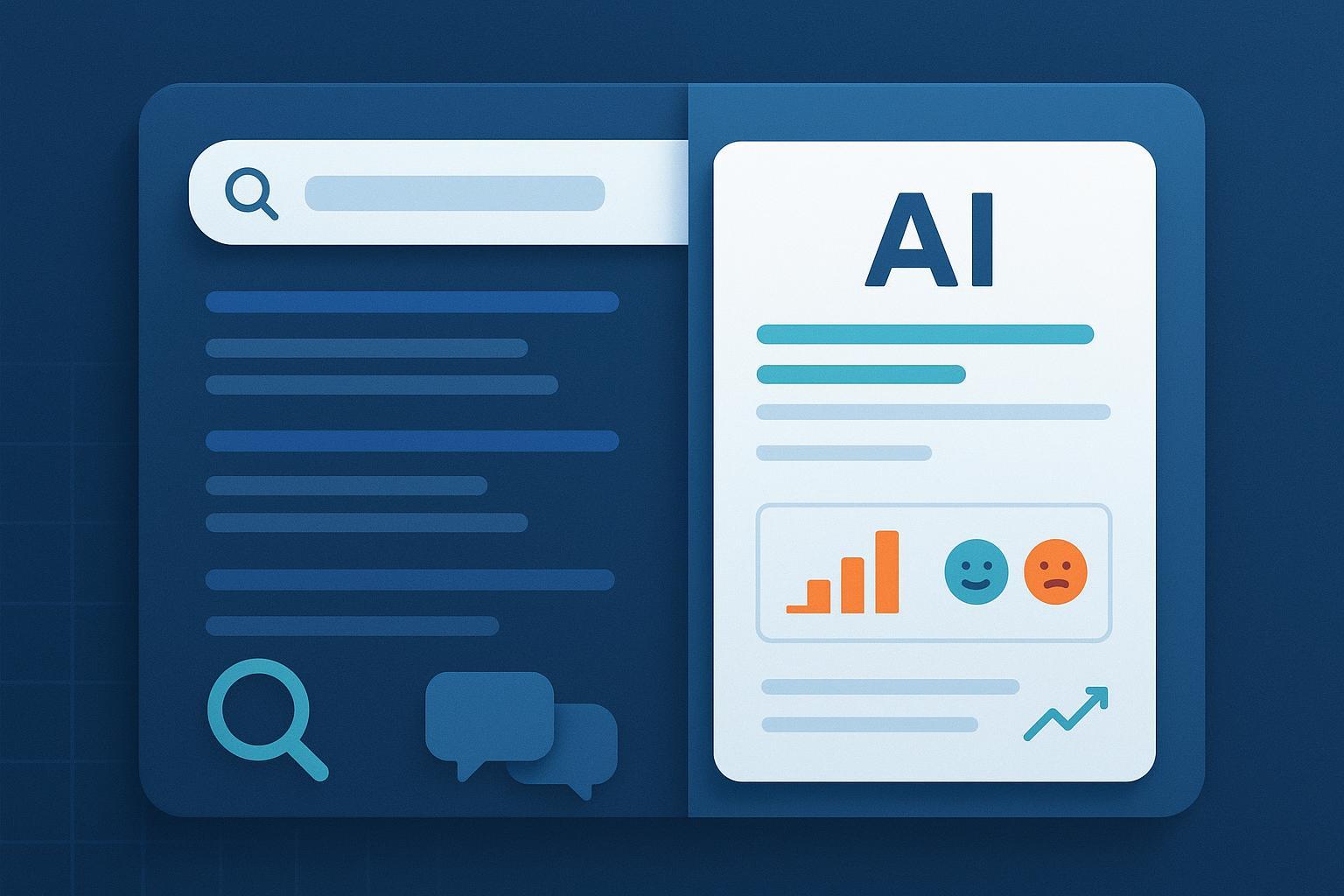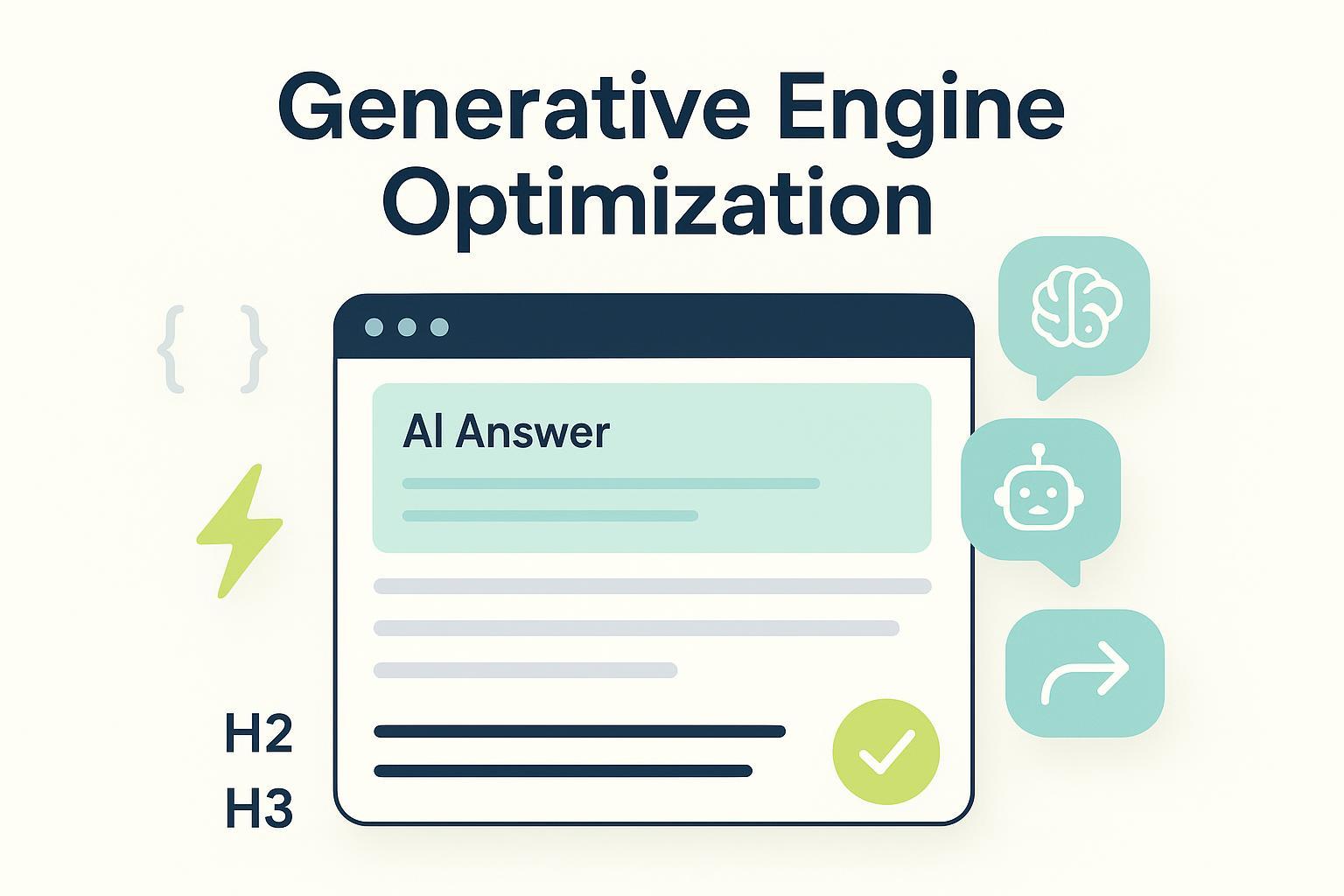How AI Search Is Changing Digital Marketing Forever (2025 Latest)
Discover 2025’s biggest AI search shifts: CTR drops, new KPIs, expert data & strategy—learn how to lead in AI-driven digital marketing now!

Updated on November 18, 2025
AI answers are no longer a novelty—they’re the default experience for more queries across Google, Bing/Copilot, ChatGPT, and Perplexity. If you own growth, content, PR, or ecommerce, your playbook has to adapt to a world where discovery often happens inside a synthesized response, not a list of blue links. The upside? You can influence these answers. The catch? Classic rank and last-click metrics undercount your impact.

What Actually Changed in 2025 (Platform by Platform)
Google expanded AI Overviews and introduced AI Mode, then confirmed ads in AI answers at Google Marketing Live in May 2025; rollouts continued globally with evolving UI and citations. See Google’s official recap in “Google Marketing Live 2025: ads in AI Overviews and AI Mode” (May 21, 2025) and a practitioner overview via Search Engine Land’s coverage of AI Mode expansion (Aug 21, 2025).
Microsoft made Copilot Search more publisher-transparent in late 2025, emphasizing clickable citations and upgraded model routing. Details are in Microsoft’s “Bringing the best of AI search to Copilot” (Nov 7, 2025).
OpenAI launched the ChatGPT Atlas browser in October 2025, embedding conversational search into browsing with agent modes and side-by-side retrieval. Read OpenAI’s “Introducing ChatGPT Atlas” (Oct 21, 2025).
Why it matters: discovery is shifting upstream of clicks. AI answers reduce the need to visit multiple pages, change how citations appear, and introduce ads into synthesized responses.
Traffic, CTR, and Attribution: The New Baseline
When AI answers render, clicks fall—often sharply—yet brand influence can still rise via citations and sentiment.
-
Organic and paid CTR erosion: A September 2025 dataset from Seer Interactive found that, for queries showing AI Overviews, organic CTR dropped roughly 61% year over year and paid CTR about 68%—a material top-of-SERP shift. The findings are summarized by Seer Interactive’s AIO impact analysis (published Nov 4, 2025) and Search Engine Land’s report on CTR declines (Nov 4, 2025).
-
Independent behavior validation: According to Pew Research’s July 2025 analysis, users who encountered an AI summary were less likely to click than those who did not—reinforcing the zero-click pattern.
-
AI referrals remain small but growing: Across 3.3 billion sessions (May–Sept 2025) in ten U.S. industries, AI sources drove about 1.08% of visits, with ~87% of AI referrals from ChatGPT; smaller shares came from Perplexity and Gemini. Details are in Search Engine Land’s coverage of Conductor’s benchmark (Nov 13, 2025).
-
Vertical variability and volatility: Ecommerce tests showed AI Overview coverage spiking mid-September and pulling back by October, with category-specific retention (e.g., Grocery/Food higher, Furniture low). See Search Engine Land’s BrightEdge analysis (Nov 3, 2025).
What does that mean for attribution? Last-click is a poor proxy when answers satisfy intent and citations influence perception. You’ll need to measure “answer influence” alongside actual sessions.
From Rankings to Influence: A Practical Measurement Framework
The core KPIs
- Answer share: Percentage of relevant queries where your brand or content appears cited inside AI answers.
- Citation prominence: Placement and clickability of your citation (above-the-fold, visually highlighted, linked versus unlinked).
- Sentiment in AI answers: Positive/neutral/negative treatment of your brand and products within synthesized responses.
- LLM-referred sessions: Visits attributed to AI engines (ChatGPT, Perplexity, Copilot) as the discovery origin.
- Zero-click value capture: Branded demand lift, direct navigation resilience, and newsletter/email acquisition tied to brand queries.
A simple workflow to get started
- Define query clusters by intent (informational, commercial, local, support) and priority audience segments.
- Track AI answer presence and citation quality across engines weekly; annotate major platform changes by date.
- Instrument AI-referral sessions and branded navigations; add “answer influence” notes to campaign briefs.
- Strengthen E-E-A-T: visible bylines with credentials, first-party evidence sections, and conservative claims on YMYL topics.
- Refresh monthly: publish an internal AI Search Visibility Score and link actions to content and PR roadmaps. For a primer on a cross-platform approach, see our overview of AI search visibility best practices and KPIs.
| Old search KPIs | New AI search KPIs |
|---|---|
| Rank for keywords | Answer share across engines |
| Organic CTR | Citation prominence and clickability |
| Sessions by source | LLM-referred sessions and conversion quality |
| Backlinks volume | Authoritative citations you provide and entity clarity |
| Last-click conversions | Zero-click value capture and branded demand lift |
Marketers can monitor their brand’s presence in AI answers across ChatGPT, Perplexity, and Google AI Overviews, and tag changes in sentiment by query cluster over time using platforms such as Geneo.
Disclosure: Geneo is our product.
For multi-platform context on where to monitor and how engines differ, see our comparison of ChatGPT vs Perplexity vs Gemini vs Bing for AI search monitoring. If you’re formalizing an internal score, align with a transparent definition like an AI Search Visibility Score and update it monthly.
Content, E-E-A-T, and Technical Execution That AI Answers Reward
Think of AI answers as editors: they extract concise, well-sourced explanations and practical steps. To be chosen, your pages need to be easy to quote, verify, and trust.
Lead with scannable summaries and clear H2/H3s. Make extractability obvious with short paragraphs, “how-to” steps, and FAQs. Use schema (FAQ, HowTo, Product, Organization) and consistent entities so engines understand relationships. Cite primary sources, not circular references. Show visible expertise—bylines with credentials, methods sections for claims, and up-to-date timestamps. In short: be quotable, verifiable, and accountable.
Compliance and YMYL Guardrails You Shouldn’t Skip
Google’s 2025 Search Quality Evaluator Guidelines clarified how raters think about AI answers, YMYL definitions, and trust signals. Treat sensitive topics with extra care.
A practical checklist for sensitive pages: ensure credentialed authorship and expert review; keep claims conservative and precisely sourced; include explicit disclaimers and a visible revision log; avoid site reputation abuse and scaled thin content; and demonstrate real-world experience and accountability. One quick test: would you trust this page to guide your family’s decisions? If not, add the missing signals.
Role-Based Playbooks
CMO and Growth Leader: Rebalance budget toward brand demand generation (PR, partnerships, thought leadership) and AI-surface readiness; set quarterly goals for answer share and sentiment. Expand measurement to include LLM-referred sessions, zero-click value capture, and a monthly AI Search Visibility Score.
Head of SEO/Content: Architect extractable content (definitions, steps, FAQs) reinforced with schema; maintain a sourcing and methods appendix for key articles. Track answer share and citation quality weekly; partner with PR to secure authoritative mentions that engines can quote.
PR/Comms and Brand Manager: Build messaging consistency across AI answers; monitor sentiment and correct inaccuracies via updated pages and outreach. Prepare expert spokespeople and credentialed bylines; maintain a fact library that LLMs can safely reference.
Ecommerce and Marketplace Teams: Ensure product feeds are clean and structured; test AI Overview-friendly product pages (clear specs, reviews, and how-to content). Monitor holiday-period volatility and annotate coverage spikes/pullbacks; pilot ads within AI answers as programs formalize.
The Next 12 Months: What to Watch and How to Prepare
Expect continued UI and policy changes—ads within AI answers, citation layouts, and agentic browsing models will keep evolving. Microsoft’s Copilot will likely iterate transparency features; Atlas may normalize conversational browsing; Perplexity’s partnerships could deepen commerce referrals. Keep a living update policy and refresh your data monthly.
If you want to operationalize answer share and sentiment tracking across AI search, you can explore Geneo.





